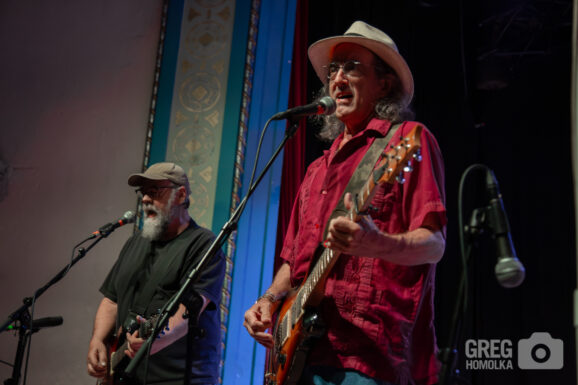When two titanic figures of modern jazz like baritone saxophonist Gerry Mulligan and pianist-composer Thelonious Monk come together, expectations naturally soar. Released in 1957 on Riverside Records, Mulligan Meets Monk isn’t just a meeting of two jazz masters—it’s a meeting of two distinct musical worlds. Mulligan, the suave architect of West Coast cool jazz, and Monk, the idiosyncratic high priest of angular bebop, appear at first glance to be an odd pairing. And yet, that’s exactly what makes this record so fascinating. This Record Store Day, Craft Recordings is reissuing this collaboration as a rare mono mix on 180-gram black vinyl.
The album opens with “’Round Midnight,” Monk’s most famous composition. It’s a curious take—not nearly as brooding or mysterious as Monk’s own solo versions or those with his classic quartet. Mulligan’s smooth tone softens the edges, smoothing over Monk’s naturally jagged phrasing. It doesn’t diminish the song’s beauty, but it shifts the emotional landscape into something more reflective. “Rhythm-A-Ning” is perhaps the most thrilling cut. Monk’s jagged melody is matched by Mulligan’s burly tone, and there’s a sense that both are letting go a bit more, meeting each other halfway. It swings hard, but it’s always a little sideways, always a little strange—in the best possible way. The album’s standout might be “Straight, No Chaser.” Here, Monk is in full form; spiky, unpredictable, and rhythmically thrilling. Mulligan, for his part, leans into the tune’s blues roots with gusto, his tone beefy and confident. It’s the most rollicking performance on the album and the tension between Monk’s idiosyncrasies and Mulligan’s melodic sensibility results in a high-energy dance of opposites. On “I Mean You,” the duo sounds more comfortable, even conspiratorial. The tune’s built-in whimsy seems to bring them into better alignment. Mulligan’s solo is playful, and Monk responds with a piano break that dances across the bar lines. The rhythm section of Wilbur Ware on bass and Shadow Wilson on drums deserves credit here for holding it all together with casual precision.
At the time of recording, Mulligan was known for his understated elegance and relaxed tone, often associated with the “cool jazz” movement. Monk, by contrast, was the avant-garde lion of the East, famed for his jagged phrasing, startling silences, and off-kilter sense of swing. That friction gives Mulligan Meets Monk its character. Rather than smoothing out their differences, the session leans into them. Mulligan often plays the role of the lyrical straight man, weaving graceful lines that attempt to tame Monk’s wild harmonic terrain. Monk, in turn, seems to prod and poke at Mulligan, tossing in dissonant chord stabs and rhythmic quirks. Ultimately, Mulligan Meets Monk might not be the most essential Monk or Mulligan album, but it’s one of the more unique. This mono version sounds fantastic as it gives high fidelity and a louder signal with absolutely no surface noise, making this definitely the version to own.








One Response
I totally agree—Mulligan Meets Monk might not be their definitive work, but it’s such a fascinating listen because of that creative tension. I love how you described Mulligan as the “lyrical straight man”—perfect way to put it! And Monk never compromises his quirks, which makes their interplay so compelling